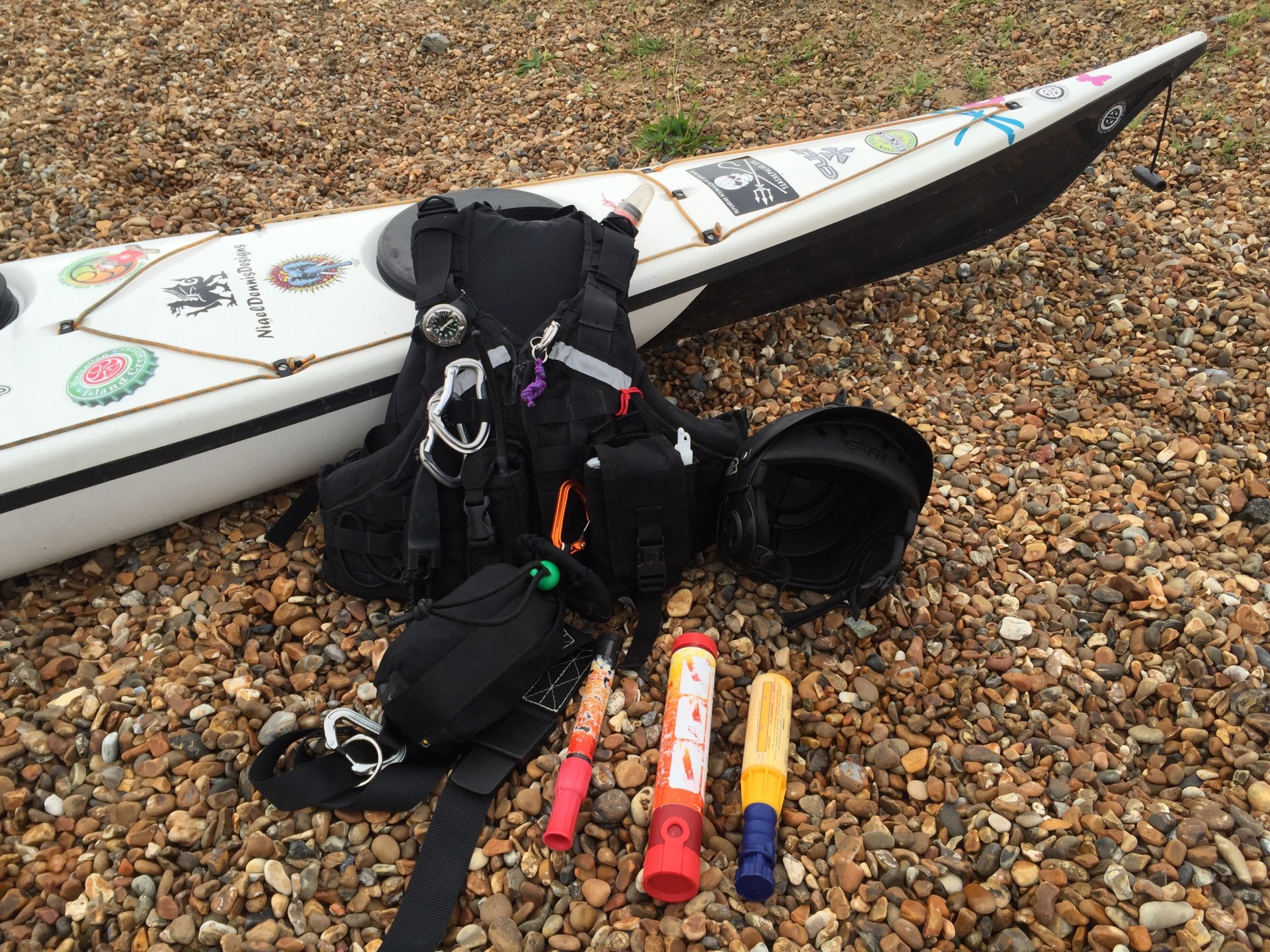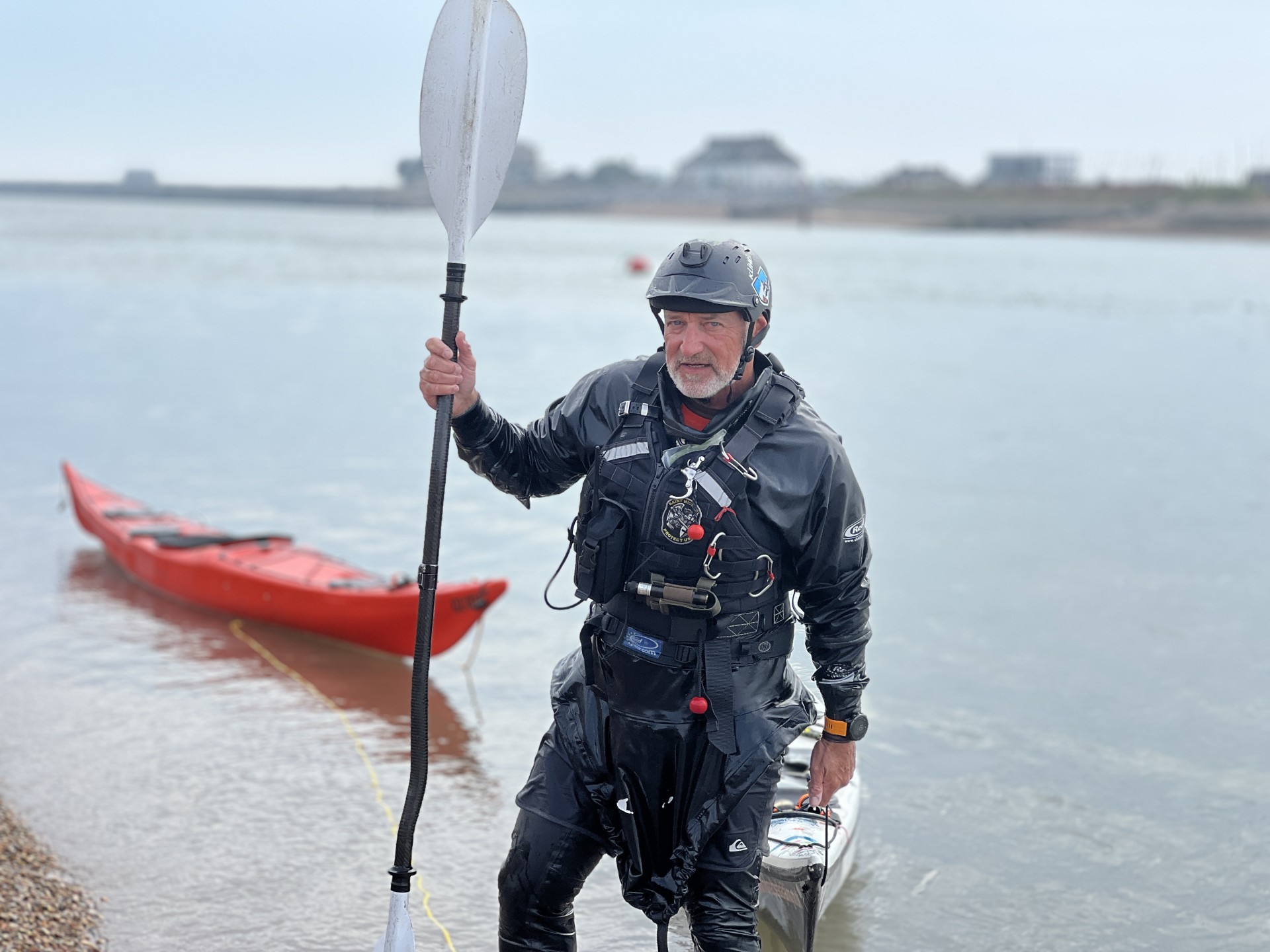
How Hard Can It Be?
Dead hard! Sea kayaking can prove very difficult if you have the wrong attitude and even deadly! And a lot of people do (have the wrong attitude). From the list of fatalities (over the past three years in particular), it seems to me there is a general sense of ignorance as to the dangers that tidal conditions present.
Most people see a flat sea & blue, sunny skies & think how hard can it be? As professional guides, we regularly witness;
1. Small child sitting on front of stand up paddle board in deep water & flow, Mum paddling without a buoyancy aid.
2. Grand parents paddling an inflatable into a strong ebb flow amongst stationery moorings & other moving vessels, with two grandchildren (under the age of 7).
3. Two teenage girls in bikinis paddling a double sit-on-top kayak out into increasing wind & swell, not wearing buoyancy aids.
4. Elderly man (with big stomach) & no buoyancy aid, drifting in deep water at least 200 metres from the nearest land.
5. Young man (early twenties) swimming out into large swell & current & tiring (assisted back to the beach by yours truly, as he staggered up the beach to his girlfriend … the hero).
6. Elderly man happily paddling down the middle of the shipping channel in a fast ebb flow with swell with no idea of how to return against the flow. Assisted home eventually by sailing club safety boats.
7. Two teenage boys lounging in inflatables with no regard to the direction of their drift & no buoyancy aids.
8.Dad paddling (no buoyancy aid) with young son hitching a ride on the stern with (you guessed it), no buoyancy aid.
And the list goes on. I’m not even going to get started on the list of fatalities here on the east coats alone. When approached, the paddlers respond with belligerence & irritation stating on the lines of I can swim to the shore!
The general public view of kayaking is as an activity anyone can do, without any form of training needed. Until they capsize in deep, cold water & experience cold water shock & hypothermia.
We run courses weekly & our entry level course not only motivate & enthuse our students but also make them safe. Why/how? By coaching through simple processes on the water that often highlight their unique & individual limitations. Some of these limitations are self-formed over years of a lack of self belief or believing something about themselves that simply isn’t true. For example, lady paddlers might believe they have no upper body strength or can’t keep up and/or are terrified of capsizing in deep water. In every case, they prove to themselves that these limiting, self beliefs simply aren’t real. Not because we say so, but because we capsize them in deep water & coach them through their assisted or self-recovery. And they complete it successfully finding that inner strength (that's always been there) & the self-belief & confidence that follows.
The opposite is true for many men who believe they can do anything by the mere fact that they are the male of the species & have access to YouTube! It's easy, I can do this, only to find their fat bellies get in the way or they don’t have the core strength to even sit upright in a kayak. And then of course there is the wake up call of cold water shock! Add these factors together, & those inflated egos deflate very fast!
In every case, the student comes away trained, enthused & aware of their own limiting factor/s (physical and mental). This informs their decision to even consider going out in the first instance & if they do, to take sensible precautions.
So, what are these sensible precautions?
1. Get trained! At least find out what happens when you capsize your kayak & whether you can cope. Join NOMAD Sea Kayaking on the ‘Introduction to Kayaking’ course and we’ll train you safe.
2. Wear a freakin’ buoyancy aid! ALWAYS!
3. Don't take your young children to their deaths just because you’re stupid enough to do it.
4. Be aware of the threats in the particular environment you intend using. These can vary hugely from jet-ski users and commercial vessels to fast flowing tides. But COLD WATER is always a threat.
5. Be aware of cold water shock & how you can cope with it. Then try it in a safe environment (it can be, & usually is, a very scary process but you’ll survive if you’re sensible).
6. Speak to the locals & find out what you can & cannot do; where you can & cannot go.
7. Always have food, fluids & spare warm clothing.
8. Always let some ashore know of your plans & timings.
9. Don’t underestimate how easy it easy for you to die out there!
If in doubt, join our most popular entry level training course, ‘Introduction to Kayaking’ & we’ll teach you the basic control strokes, a deep water assisted recovery as both the recoverer & casualty, kayak & paddle dynamics & a thorough overview of clothing & equipment.
Don’t underestimate the dangers out there. Invest in your safety & that of your loved ones & get yourself trained.
At the very least WEAR A BOUYANCY AID OR go & do something else! You don't need a buoyancy aid to play golf (bellies acceptable) or wash the dishes.
NOMAD out!

Since surfing with the pros as a kid in Durban South Africa on my hollow 12ft barge & getting absolutely trashed, I was hooked on sea paddling. Over a period of forty-two years I’ve surfed, white watered & sea kayaked in locations around the world. I've guided as a full-time professional for the past twenty one years & my journey continues.